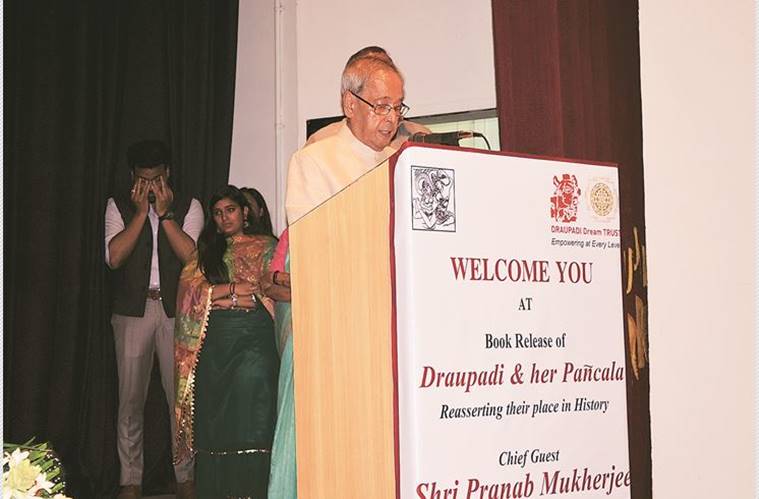History, and Her Story
At a book launch on Draupadi, former President Pranab Mukherjee speaks of her inner strength.

Former President Pranab Mukherjee at the book launch.
From Dhritarashtra to Duryodhana, each character from the Mahabharata is alive today,” said former president Pranab Mukherjee, at the launch of the book Draupadi and Her Pancala: Re-asserting Their Place in History, at Delhi’s National Museum on Tuesday.
Mukherjee hailed Draupadi as the greatest daughter of India, calling her a woman with inner strength to speak out against “insults and injustice”. Draupadi, the daughter of Drupada, ruler of ancient kingdom of Panchala, is as relevant as ever, he said, and it is time to recognise and honour her. Mukherjee was the chief guest at the event.
Edited by Neera Misra and Rajesh Lal, Draupadi and Her Pancala… (Om Publications; Rs 2,250) is a collection of 24 papers presented by various scholars on the subject. Divided into two sections, the first part deals with the character of Draupadi, and the subsequent section covers Panchala’s archaeology, geo-archaeology and history.
“Draupadi’s actions and reactions emphasise the place of women in society, another issue that is ever relevant in today’s world,” said Mukherjee. Misra said, “In today’s time of #MeToo, it may be imperative for us to know about the woman who said, ‘how dare you’. BR Mani, Director-General, National Museum, spoke about the span of the mythical kingdom of Panchal as an area covering central Uttar Pradesh and parts of Uttarakhand in contemporary India, where excavations were carried out in the ’40s.
The former president said many people seem to misinterpret the ‘real Draupadi’. “Each character in the Mahabharata is as alive today as he or she was during the period when it happened. You just have to look around in society and you will find a Dhritarashtra, a Duryodhana, a Shakuni, but there will always be a Draupadi, raising voice for justice,” said Mukherjee
The book’s cover shows a sculpture titled Parvati, which was found during the excavations in 1940 near Kannauj (believed to be part of the erstwhile Panchala), and is currently on display at the National Museum, Delhi.






















No hay comentarios:
Publicar un comentario